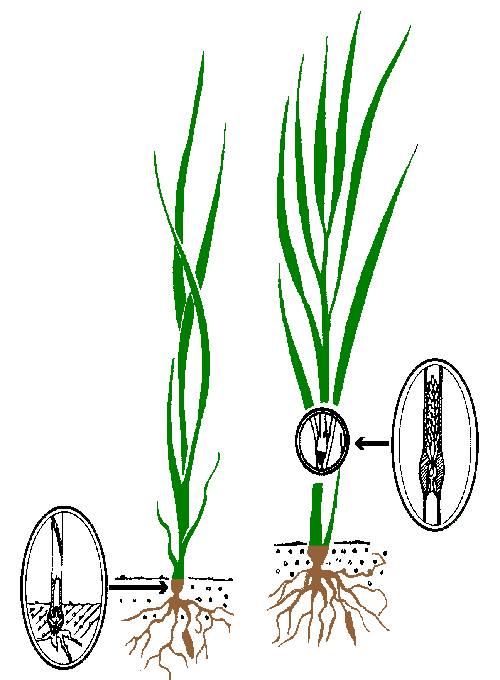 :::
Laboratory analyses clearly indicate
that the nutrients found in young green cereal plants vary with the stage
of growth, rather than with the age or height of the plant. Chlorophyll,
protein, and most of the vitamins found in cereal grasses reach their peak
concentrations in the period just prior to the jointing stage of the green
plant. Although this period lasts for only a few days, cereal grasses
which are consumed as food supplements should be harvested precisely
during this stage of the wheat or barley plantís development. :::
Laboratory analyses clearly indicate
that the nutrients found in young green cereal plants vary with the stage
of growth, rather than with the age or height of the plant. Chlorophyll,
protein, and most of the vitamins found in cereal grasses reach their peak
concentrations in the period just prior to the jointing stage of the green
plant. Although this period lasts for only a few days, cereal grasses
which are consumed as food supplements should be harvested precisely
during this stage of the wheat or barley plantís development.
::: The
left is the wheat grass plant during its highest nutrient period. To its
right is the same plant a few days later, after jointing. The jointing stage is that point
at which the internodal tissue in the grass leaf begins to elongate,
forming a stem. This stage represents the peak of the cereal plantís
vegetative development; factors involved in photosynthesis and plant
metabolism would be expected to increase up to this stage. We
harvest the top few inches of the plant on the left, before the jointing
process is complete, ensuring maximum nutritional value in the final
product.
::: After the jointing stage, the stem
forms branches and continues to elongate. The chlorophyll, protein, and
vitamin contents of the plant decline sharply as the level of cellulose
increases. Cellulose, the indigestible plant fiber, provides structural
stability for the growing stem.
::: Over a period of several months,
the green leafy plants are transformed into golden stalks of grain. The
mature cereal plant holds the seed grains which contain the nutrients
necessary for germination and early growth of the young cereal plant. And
so the seed-grass-grain cycle continues.
|
